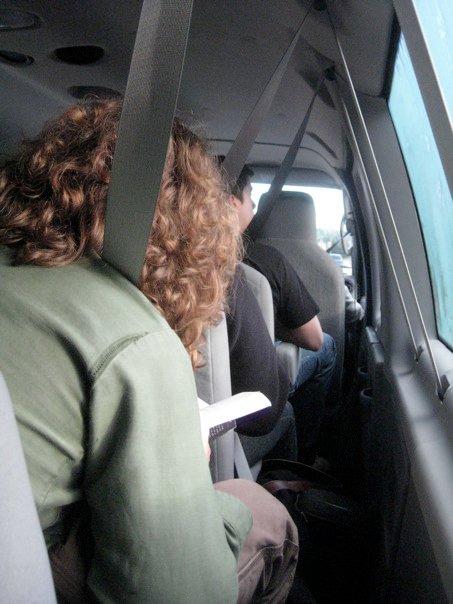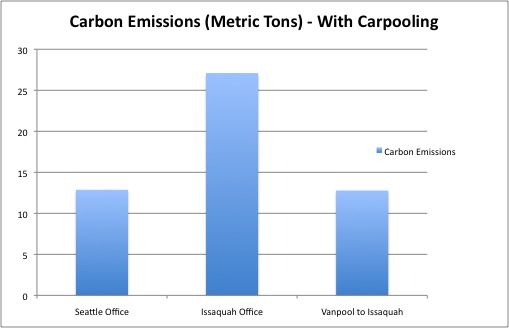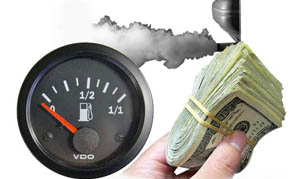EOS Alliance – The Carbon Footprint
Since our move to Issaquah, and since we started a Vanpool, we’ve all been interested in the differences in commute: how it has affected our time, money, and carbon footprint. Last year everyone lived significantly closer to the office, but there was limited carpooling happening, and employees then didn’t have the option of Vanpooling or using a company sponsored Orca Card.
To conquer these inquiries, the team put together an Excel spreadsheet mapping out the daily commute for all our employees, comparing the commute to our old Seattle office and to our new Issaquah office, the difference the Vanpool and bus passes make, and the savings to everyone in the office. We made these comparisons both daily, and over a 12-month period (making the assumption that the staff wouldn’t change over the 12 months—not true in the case of our AmeriCorps members).
After extensive work in Excel and many alterations to the expected driving trends of EOS Alliance employees, the end result of the Vanpool becomes more apparent. We looked at what the daily commute would be in miles if everyone drove individual their own personal vehicles, if employees carpooled, and if the Vanpool was used.
In the carpooling scenario, we assumed those living within a half mile of each other would carpool, and that employees who don’t own cars would either find a ride from another employee or take the bus. For employees who did bus, we counted the bus as having a carbon-neutral footprint: since the bus would be running regardless of whether EOS members were on it, we decided not to count the carbon emissions coming from this form of public transit.


This Year Versus Last Year
It turns out that when the EOS Alliance members use the Vanpool, the carbon footprint between this year and last year is about the same, only differing by about 0.09 metric tons of CO2 per year. It may be surprising to note that carbon emissions have actually gone down by 0.09 metric tons, even though the majority of employees now have to commute from Seattle to Issaquah on a daily basis. Employees also save about $3,000 each year because of the Vanpool, when compared to the commute to the old Seattle office location. Because of the Vanpool, we seem to be both economically and environmentally better off than last year. GO ALLIANCE!
The Issaquah Commute: Pre and Post Vanpool
When the Vanpool route is compared to the commute without public transportation to Issaquah, the results look more drastic. Even when it is assumed that employees will carpool, the total carbon
footprint would be about double without the Vanpool. The Vanpool, in addition to halving the carbon footprint (from 27.1 to 12.78 metric tons per year), saves EOS employees over $8,000 a year! It is also part of the ongoing fight to make the streets less crowded, increase efficiency, and use less gas.
The only potential downside in this situation is the increase in time everyone has to commute. Although, this isn’t necessarily a bad thing. It provides the opportunity for all of us to have a very leisurely commute, letting us read, relax, or talk with our coworkers while in route to or from work.












